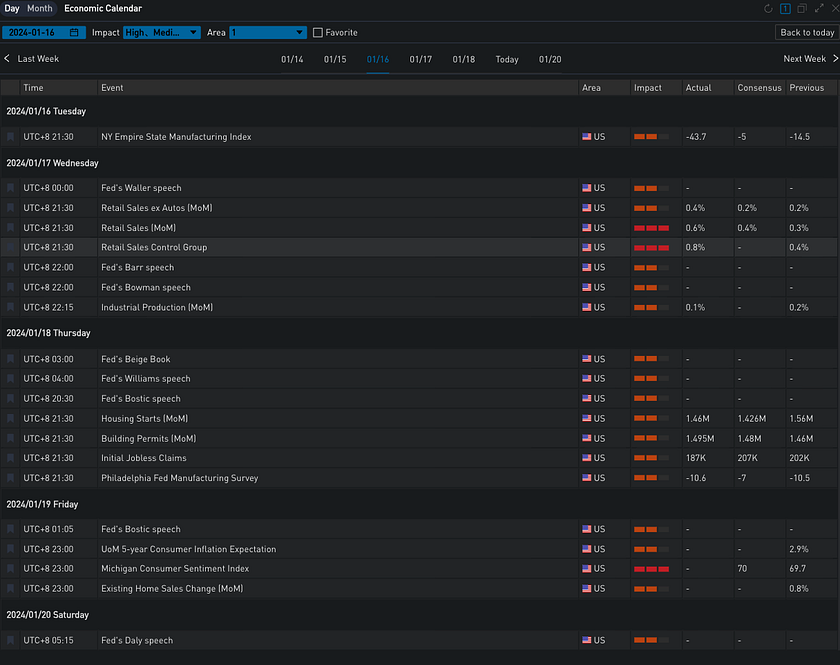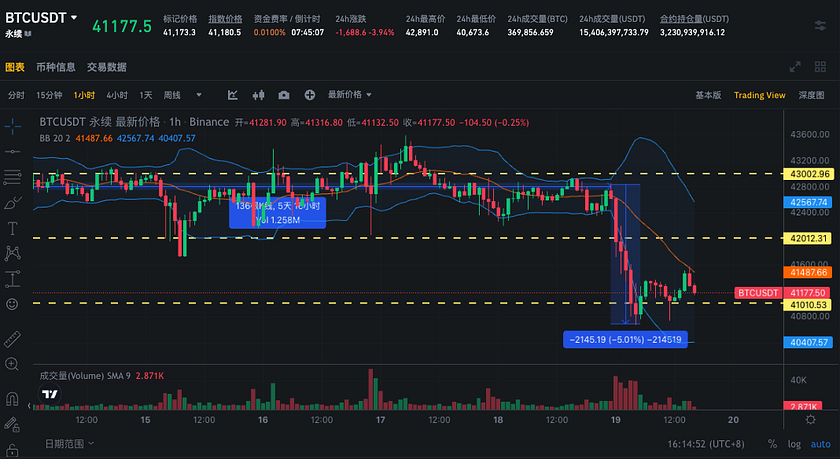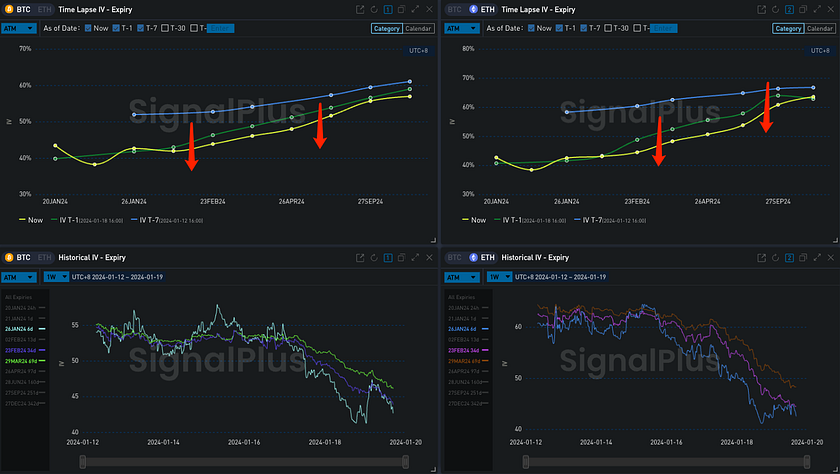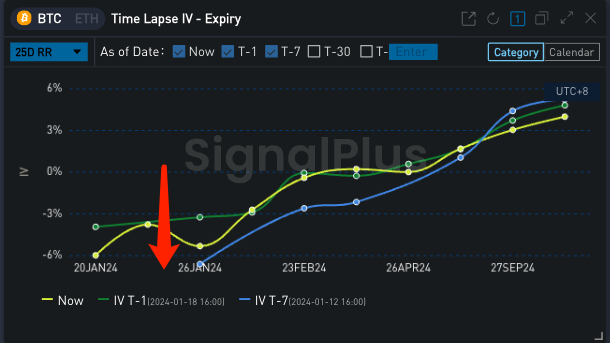SignalPlus Volatility Column (20240119): BTC Short-term Drops 5%, Mid to Long-term IV Continues to Decline


Yesterday (18 JAN), Federal Reserve's Bostic made a statement to the market, indicating that if inflation progress slows, it would be better to maintain high interest rates for a longer period. If the inflation rate decreases more rapidly, there might be an earlier rate cut. Following this, the U.S. reported that initial jobless claims for the week were recorded at 187,000 (below the expected 207,000), marking a new low since late September last year, highlighting the continued robustness of the labor market and further dampening market expectations for a rate cut by the Federal Reserve. U.S. Treasury yields responded by rising, with the current two-year and ten-year yields at 4.346% / 4.150%. The three major U.S. stock indices opened high and closed higher, with the Dow/S&P/NASDAQ rising by 0.54% / 0.88% / 1.35%.

In the cryptocurrency sector, after nearly a week of sideways trading, BTC experienced a short-term drop of about 5% yesterday, briefly challenging the 41,000 level and finding support, marking a new low since the ETF approval. The market is closely monitoring the fund flows related to ETFs, and many analyses attribute the recent decline in BTC to selling pressure from Grayscale BTC. Among them, JPMorgan highlighted the importance of liquidity and market depth, stating that if GBTC loses its liquidity advantage, more capital may exit, amounting to between $5 billion and $10 billion. It also mentioned that as institutional investors gradually exit GBTC, "the number of Bitcoin wallets from retail investors has recently decreased," suggesting they are shifting from exchanges to cheaper spot BTC ETFs.

In terms of options, the distant IV of BTC/ETH decreased again by about 2% / 4% in the past 24 hours, with BTC's overall level nearly approaching the lowest point in the past three months. Meanwhile, for ETH, several short strangles on put volatility appeared at the end of January and June, but the opposite was true for BTC, where traders chose to buy the 23 Feb 44000 Straddle call volatility at the lowest point in the past three months, which is also close to the lowest point of the term structure. Additionally, trading was most active at the end of January, with a clear tendency to buy puts and sell calls in the market, causing the 25 dRR for that expiration date to decline by about 2% to the low point of the Vol Skew curve.
 Source: Deribit (as of 18 JAN 16:00 UTC+8)
Source: Deribit (as of 18 JAN 16:00 UTC+8)  Source: SignalPlus
Source: SignalPlus  Source: SignalPlus
Source: SignalPlus  Source: SignalPlus, BTC's 25 dRR at the end of January decreased by 2% to the low point of the Vol Skew curve
Source: SignalPlus, BTC's 25 dRR at the end of January decreased by 2% to the low point of the Vol Skew curve  Source: Deribit Block Trade
Source: Deribit Block Trade  Source: Deribit Block Trade
Source: Deribit Block Trade 









